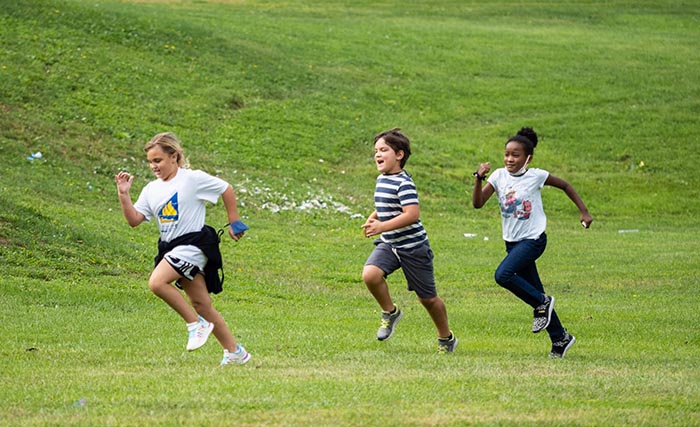
Parent demand is growing, but the pool of potential employees is drying up
From The Hechinger Report
By Ariel Gilreath
April 7, 2022
The last bell of the school day is when the work truly begins for staff at the Wisconsin Youth Company. But in the last few months, that work has been complicated by staffing challenges.
Kids in about two dozen elementary schools across Dane County and Waukesha County in Wisconsin empty out of classrooms at the end of the day and make their way to gyms, cafeterias or media centers. For the next few hours, they are in school but they are also done learning for the day.
Unlike some after-school programs, Wisconsin Youth Company does not focus on academic tutoring or instruction. Instead, children can relax, play, finish homework, or listen to music.
“We set up a program where we’re able to say yes to kids making their own choices about what activities they want to do after school,” said Rebecca Carlin, executive director.
Maintaining enough staff to supervise the children is key for the program – there is always at least one adult per 17 children. But at the height of the latest Covid-19 wave in January, Carlin had to make the difficult decision to temporarily close some programs for a few days because of staff absences.
“That was a first for us – we’ve never done that before,” Carlin said.
All-day child care is essential for working families when children are too young for school, but the need for child care doesn’t disappear once kindergarten begins. According to the Afterschool Alliance, an advocacy group for after-school programming, 7.8 million students were enrolled in after-school programs in 2020, with millions more seeking access to such programs.
Like the child care industry as a whole, after-school programs often operate on tight revenues and low pay. But programs like the Wisconsin Youth Company have largely been able to make it work. The organization offers health and time-off benefits, pays more than many after-school groups, offers full-time positions and employs substitutes when staff are out.
Even for groups with better benefits, the strain of the pandemic has started to take its toll. In the weeks before the wave of omicron cases in the United States, after-school directors reported heightened concerns about retaining and hiring staff. A survey sent by the Afterschool Alliance from Nov. 1 to Dec. 13 showed 51 percent of respondents were “extremely concerned” about staff shortages, up from 35 percent last summer.
“I’ve been in the field for more than 25 years, and staffing has always been an issue,” said Heidi Ham, chief operating officer for the National AfterSchool Association, a membership organization for professionals who work with children during out-of-school time. “But this is a time where we’ve actually had to turn kids away. This is really the first time I’ve seen that happening on a large scale.”
Congress has provided schools over $190 billion in Covid aid funding since the pandemic began, a portion of which can be spent on after-school or extended day programs. But much of it is being spent on academic recovery programs after the school day ends, rather than play-based programs like the Wisconsin Youth Company.
For Camp Fire, an after-school and summer youth development program with sites across the country, creative incentives have helped stem the tide of staff leaving. Since many of the organization’s summer programs rely on international employees who visit for the summer jobs, the pandemic has had a big impact.
“It forced a lot of summer camp programs to shift their models because they simply weren’t able to hire and bring in international staff anymore,” said Shawna Rosenzweig, chief strategy officer for the organization.
Rosenzweig has seen programs offer more benefits to attract staff – like year-round positions where summer camp employees transition to after school, or housing and meals even when camp has not yet begun.
With Covid-19 cases down dramatically from their January peak, and restrictions lifting across the country, more families are registering for the camps this year than since the pandemic started. The goal, Rosenzweig said, is to hire enough staff so camps won’t have to turn many students away.
“This is a really crucial summer. Young people want and need these experiences,” Rosenzweig said.
Ham, with the National AfterSchool Association, hopes the crisis spurs more national conversations about after-school care. She believes other after-school programs could benefit from offering the kind of incentives Wisconsin Youth Company provides.
“We see things happening in different pockets locally – raising wages, paid time off – things that a lot of organizations typically haven’t been able to offer,” Ham said. “But this is a systemic issue.”
Photo: After-school programs provide an essential service for parents across the country, as well as a place for children to relax and play when the school day is done. But they’ve been hit by the same staffing shortages seen in the child-care industry as a whole. Credit: Yunuen Bonaparte for The Hechinger Report
Read this and other stories at The Hechinger Report

